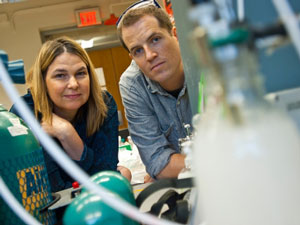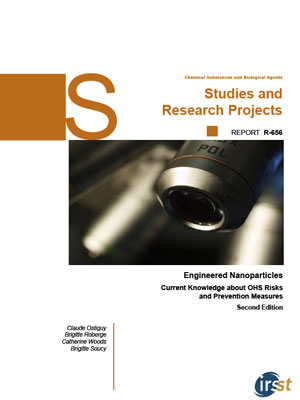Harnessing the potential of the oddly-shaped molecule
A team of physicists and chemists have demonstrated for the first time the way in which an irregularly shaped molecule is adsorbed on a surface.
Sep 22nd, 2010
Read more
A team of physicists and chemists have demonstrated for the first time the way in which an irregularly shaped molecule is adsorbed on a surface.
Sep 22nd, 2010
Read moreNew findings from the laboratory of University of Illinois researcher Joe Lyding are providing valuable insight into graphene, a single two-dimensional layer of graphite with numerous electronic and mechanical properties that make it attractive for use in electronics.
Sep 22nd, 2010
Read moreDas Leibniz-Institut fuer Innovative Mikroelektronik und das Research Institute of Electrical Communication an der Tohoku University in Japan verlaengern ihre Zusammenarbeit um weiter fuenf Jahre.
Sep 22nd, 2010
Read moreSpecial focus is devoted to novel basic materials science approaches to build up low power Silicon microelectronics, for example by merging photonics and electronics on the mature Si technology platform.
Sep 22nd, 2010
Read more MIT engineers want to capture carbon dioxide and not put it underground, but turn it into something that will be stable for hundreds of thousands of years.
MIT engineers want to capture carbon dioxide and not put it underground, but turn it into something that will be stable for hundreds of thousands of years.
Sep 22nd, 2010
Read moreUndergraduate program combines study-abroad, research experiences.
Sep 21st, 2010
Read moreLightning-fast connections between robotic limbs and the human brain may be within reach for injured soldiers and other amputees with the establishment of a multimillion-dollar research center led by Southern Methodist University (SMU) engineers.
Sep 21st, 2010
Read moreThe central theme of the project is the printing of such cells confined in micro-droplets of only one tenth of a millimetre in diameter. The mid-term objective of the seven research institutions and companies working together is to establish a platform for the manipulation, culture, and analysis of individual living biological cells without loss of viability.
Sep 21st, 2010
Read moreDas Institut fuer Mikrosystemtechnik (IMTEK) der Uni Freiburg ist Technologiepartner und Projektkoordinator des am 1. September 2010 gestarteten EU-Forschungsprojektes PASCA. Hinter der Abkuerzung verbirgt sich die Entwicklung einer innovativen Plattform fuer die Manipulation und Analyse einzelner lebender Zellen (Platform for Advanced Single Cell-Manipulation and Analysis).
Sep 21st, 2010
Read moreA team of Yale physicists has used lasers to cool molecules down to temperatures near what's known as absolute zero, about -460 degrees Fahrenheit. Their new method for laser cooling is a significant step toward the ultimate goal of using individual molecules as information bits in quantum computing.
Sep 21st, 2010
Read moreFor months, Anthony West could hardly believe what he and his colleagues were seeing in the lab -- or the only explanation for the unexpected phenomena that seemed to make sense. Several of the slightly doped high-purity barium titanate (BT) ceramics his research group was investigating were not following the venerable Ohm's Law, which relates electrical voltage to current and resistance.
Sep 21st, 2010
Read moreAt its most basic level, understanding chemistry means understanding what electrons are doing. New research not only maps the movement of electrons in real time but also observes a concerted electron and proton transfer that is quite different from any previously known phase transitions in the model crystal, ammonium sulfate.
Sep 21st, 2010
Read moreResearchers have studied the properties of femtosecond laser ablation plumes to better understand how to apply them to specialized films.
Sep 21st, 2010
Read more Quebec-based IRSST has released the second edition of its report 'Engineered Nanoparticles: Current Knowledge about Occupational Health and Safety Risks and Prevention Measures'.
Quebec-based IRSST has released the second edition of its report 'Engineered Nanoparticles: Current Knowledge about Occupational Health and Safety Risks and Prevention Measures'.
Sep 21st, 2010
Read moreREALITY, a European funded initiative on Design for Variability, has just finished its project mission. In about its 2.5 years lifespan REALITY has focused on developing industrially relevant innovative design techniques, methods, and flows for the design and analysis of energy-efficient self-adaptive System-on-Chips (SoCs).
Sep 21st, 2010
Read moreResearchers from Northwestern University and the University of Illinois at Urbana-Champaign designed a clever square polymer stamp that allows them to vary its adhesion strength. The stamp can easily pick up an array of electronic devices from a silicon surface and move and print them on a curved surface.
Sep 20th, 2010
Read more